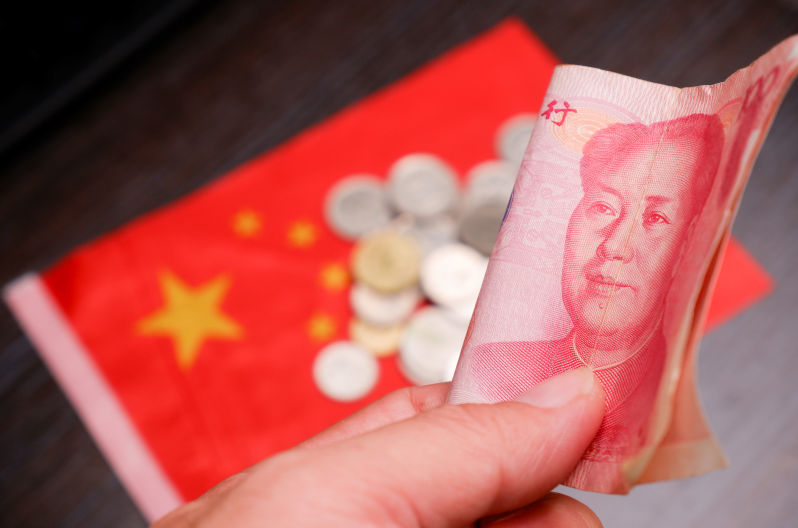Debt trap diplomacy? Another anti-China myth exposed
September 26, 2022
_Despite the hype, there is very little evidence that China has engaged in debt trap diplomacy in the past.
_
Developing countries are feeling the pinch. Food prices, inflation, interest rates and the US dollar are all going up. Their economic growth and ability to repay debts are going down. At the same time, developing countries now owe more money to China than they do to the Paris Club of rich countries combined. Are we about to see a wave of debt trap diplomacy?
The term debt trap diplomacy was coined by former US Vice President Mike Pence. The idea is simple. A country (specifically China) devises a strategy where it lends lots of money to developing countries who probably wont be able to repay it. Once those countries default, China swoops in and offers to settle their debts in exchange for geopolitically strategic assets (like seaports and airports) or for allowing China to develop a military base on their soil.
The ingredients for a wave of debt trap diplomacy are all there. Chinas lending to developing countries has increased by a whopping four-fold since 2010 to more than US$170 billion, according to World Bank data. AidData finds that there are more than 40 low and middle income countries whose debt exposure to China exceeds 10 per cent of their entire economy.
Right on cue, lots of countries are getting into financial trouble. Sri Lanka and Lebanon have defaulted. Laos looks shaky. The number of developing countries with sovereign debt trading at distressed levels has doubled in the past six months, according to Bloomberg. Almost a quarter of a trillion dollars about a fifth of all emerging market external debt is at risk.
This is hardly surprising. Rising interest rates are making developing country debts unsustainable. A rising US dollar is making those debts bigger for the many developing countries which borrowed in that currency. Rising food and energy prices are hurting economic growth exactly when these countries are recovering from the pandemic.
The ingredients of debt trap diplomacy are there. But does this mean we will see it?
It seems unlikely.
Despite the hype, there is very little evidence that China has engaged in debt trap diplomacy in the past. An analysis by Kevin Acker, Deborah Brautigam and Yufan Huang from Johns Hopkins University found that Chinas response is pretty consistent when African borrowers get into trouble: it either cancels the debt or kicks the can down the road by extending the loan. There have been no asset seizures and no attempts to force repayment.
Lee Jones and Shahar Hameiri from Chatham House similarly found no evidence of debt trap diplomacy when they looked at Chinas lending under its Belt and Road initiative. Even in Sri Lanka and Malaysia the two most commonly cited victims of debt trap diplomacy they found that the projects were initiated by recipient governments, not China, and that their debt problems were largely homegrown. Analysis from Shreya Gulati and Anand Babu at the London School of Economics reached the same conclusion.
But isnt debt trap diplomacy still hypothetically possible, particularly if more countries which owe money to China start defaulting? Sure, but its also well within our power to stop it.
Much of the risk of debt trap diplomacy comes from the inadequacies of the so-called global financial safety net. This is the collection of global institutions (think: the International Monetary Fund), regional institutions (think: the Asian Development Bank) and bilateral supports (think: currency swap lines) that help countries that get into financial trouble.
Put simply, if the global financial safety net is adequate, developing countries will rely on it in times of distress, instead of China. They wont be at the mercy of China and wont have to sell any of their assets.
In a perfect world, these countries will go straight to the International Monetary Fund for help. The IMF will do what it normally does: force China to forgive a chunk of its loan and restructure whats left so it can be repaid over a longer period of time at lower interest rates. The IMF then provides the country with emergency funds to stabilise its economy.
An adequate global financial safety net makes debt trap diplomacy a pointless strategy. Debt trap diplomacy only works if the developing country has no option other than to sell you its geopolitically strategic assets. If it can simply turn to the IMF for help, and the IMF bails it out and forces China to forgive much of its debt, it never gets the assets and has lost lots of money in the process.
So, whats the problem? The problem is that the global financial safety net and the IMF are far from adequate. Most Asian countries, for example, would crawl over broken glass to avoid going to the IMF after its terrible performance during the Asian financial crisis. Countries still face a lot of negative stigma and market backlash if they go to the IMF. Despite reform, its loans still come with too many strings attached and are too slow, usually arriving once a crisis is underway rather than before it gets going.
Debt trap diplomacy is more myth than malice. And even if it is a real risk, we have the power to stop it. If those whipping up fear about debt trap diplomacy are genuine in their concerns, strengthening the global financial safety net should be their top priority.
